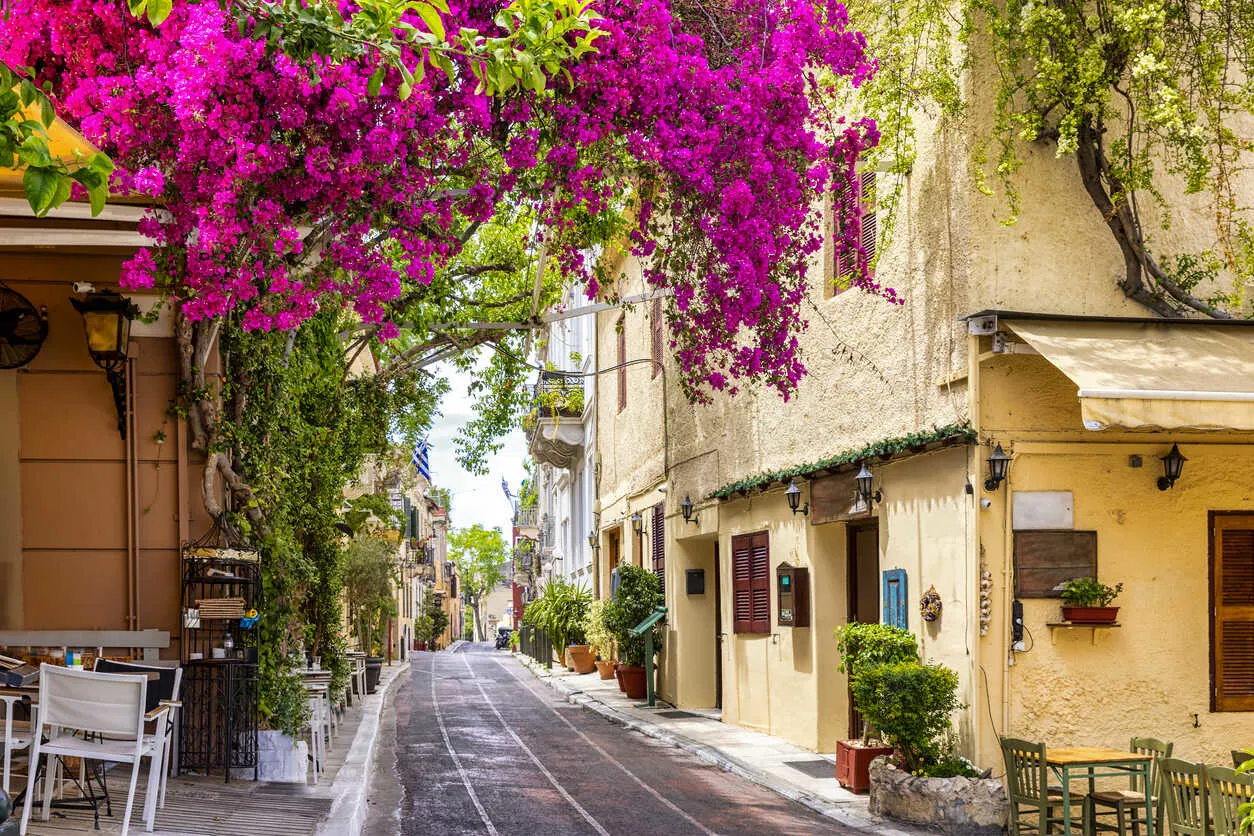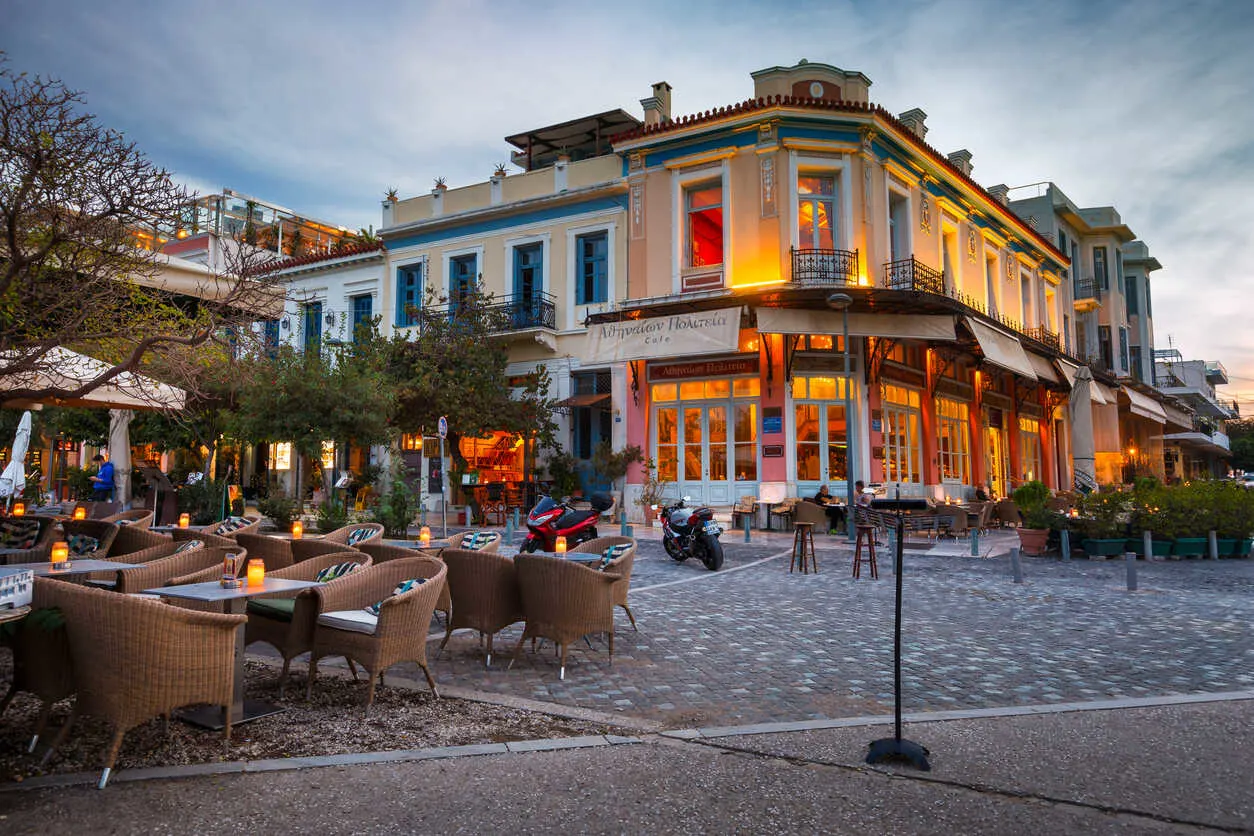Could I live here?
I ask myself that question everywhere I land in the world. As I’m driving or walking, I’m paying attention to the feel of a place.
So far, I would gladly live in Bangkok; Barcelona; Punta del Este, Uruguay; Kotor Bay, Montenegro; the Scottish Highlands; southern Ireland (and maybe a few other destinations).
But as my plane descended toward the latest airport on my 2024 itinerary, that question loomed larger, because I was looking out the window at one of the greatest cities on the planet—Athens, Greece.
I’d visited Athens when it was consumed with riots in the wake of the southern European debt crisis, and again on a relaxing holiday with the woman who would become my wife.
To expose my bias upfront: I love Athens. I love Greece. The food, the culture, the people, the landscape, the history, the mythology.
The sea.
Few places grab me and shake me the way Athens does. Ancient urban decay packaged in a Louis Vuitton handbag. Manolo Blahnik heels traipsing across a litter-strewn sidewalk. The glimpse of a little black dress on a Vespa whining its way over pothole-pocked streets and through buildings reminiscent of late-19th century New York City tenements.
Greece is one of the handful of European countries Americans think they might want to live an expat life. And my wife and I regularly talk about Athens as a place we might want to live next.
So, I landed in the city with an agenda: To experience certain neighborhoods and determine their livability.
Over the span of four days, I walked 35 miles through five Athens neighborhoods in the heart of the city surrounding the Acropolis.
Here’s my take on the bad, the beautiful, and the fairest of them all…
Plaka: The Neighborhood of the Gods (and Tourists)

Plaka is the oldest neighborhood in Athens, dating back 3,500 years. Locals call it the "Neighborhood of the Gods" since it was around when the ancient Greeks started writing their mythology.
I’d rename it the Neighborhood of the Tourists. They’re everywhere and, frankly, annoyingly so. That fact would make living here, even as a local, a real challenge.
Lying along the northern and eastern base of the Acropolis, Plaka is a Byzantine warren of alleys and what I’ll charitably call roads. It’s hilly in that you must climb and descend stairs or roads/alleys as you move around to shops and restaurants and cafes.
Buildings here are ancient stone-andstucco, often splashed with bougainvillea and various flowering vines. Small houses and low-rise apartments behind centuries-old façades—some gorgeous, some disastrous—hide down alleys that seem to go nowhere. Live music spills forth from al fresco eateries, tables unapologetically encroach onto the cobblestone paths and roads pedestrians and cars seek to navigate.
Lovely apartments—and I mean places you’d happily call home—start at about $900 per month for a small onebedroom. Add another bedroom and you add another $400 or so.
The whole area is surprisingly tidy for its age, and pretty much around every corner is another magazine-worthy photo op.
However…
Everything that makes Plaka a must-see attraction for tourists is everything you’re quite likely to despise as a resident.
Tourists are everywhere. A swarm of ever-nattering locusts you cannot escape. The only time they’re not around is very early morning. But by about 9 a.m., it’s tourist central.
The neighborhood is loud, especially into the evening when libation-enlivened voices and laughter compete with the music. Trying to walk with purpose from Point A to Point B is an unending exercise in navigating tourists who love to amble five or six across, oblivious to the obstacle they create.
And there’s no way you’d ever want to own a car here. Ever!
The roadways are skinny. Tourists clog them and can’t be bothered to move. And good luck finding any place to park.
So, if you want a car to get around the city and the country, or you want peaceful evenings and scrum-free streets to walk, Plaka is not for you.
But if you’re a digital nomad or a young, childless couple OK with using Uber and buses to move about, and you want to be in the dead center of the action and the nightlife, Plaka is your baby.
Makriyanni & Koukaki: The "West Hollywood" of Athens
Plaka’s southern border bleeds into Makriyanni, which then bleeds into Koukaki. Despite their proximity to Plaka, they don’t resemble it in the least.
To me, they’re very reminiscent of West Hollywood. Low-rise, mid-century modern apartment buildings. Hipster coffee shops here and there. Around certain corners you catch glimpses of the Parthenon.
The area clearly attracts digital nomads, who camp out at various cafes and coffee shops during the day working on their laptops. Then again, you’ll also find a mix of older locals who are out walking their dogs or hanging laundry on lines outside their apartment windows.
The land is flatter here, though not necessarily flat. Streets are much quieter and far less crowded. And you’re still very close to Plaka—a five-minute walk—for your own entertainment.
The big selling point: the relative lack of tourists, since Makriyanni and Koukaki fall outside the typical circuit. Tourists are still around, just because they’ve gone on a walkabout. But their numbers are thinner.
Parking, however, is still a bear; much of it is on-street. A taxi driver who grew up in Athens called the neighborhood "great, but you’re going to drive around for 10 or 15 minutes to park your car."
You can find nice, livable—albeit small—two-bedroom apartments here on a leafy street for as little as $750 monthly. A lovely three-bedroom with a huge kitchen and equally huge balcony is just under $1,400.
The two neighborhoods are great for families, couples, and digital nomads who want to be close to Plaka but not deal with the hassles of Plaka. Again, I’m not sure I’d want a car here, but it wouldn’t be nearly as bad as in Plaka.
The Two Faces of Monastiraki

The Monastiraki neighborhood sits atop Plaka’s northern border. Parts of it—areas around Karaiskaki Street, Ag. Anargiron, and Miaouli Street—are very cool. Very artsy. Boutique and vintage clothing shops populate certain areas, and the restaurant/bar scene around Iroon Park is reminiscent of Manhattan’s East Village or Tribeca.
And then there’s the other part of Monastiraki—what I’ll call the neighborhood’s northern edge and northwest panhandle…
It’s bland, blah, and unwelcoming in a tenement-building-smelling-of-staleurine kind of way. Relatively nice one-bedroom apartments in the grungy parts are less than $500 per month. In the artsy parts, a beautiful, open, and airy two-bedroom will cost about $1,250.
But I’d never recommend living in Monastiraki. The good parts and bad parts intermingle too much.
Get Your Free Greece Report Today!
Get Your Free Greece Report Today!
Learn more about a slower pace of life in Greece and other countries in our free daily postcard e-letter. Simply enter your email address below and we'll also send you a FREE REPORT — Retire in Greece—Find Your Dream Retirement in This European Archipelago.

By submitting your email address, you will receive a free subscription to IL Postcards, Overseas Dream Home, The Untourist Daily and special offers from International Living and our affiliates. You can unsubscribe at any time, and we encourage you to read more about our Privacy Policy.
Kolonaki: The Embassy Neighborhood
Embassies and consulates.
That’s tells you a lot about Kolonaki.
Because no matter what city you’re in, if the world’s embassies and consulates call a particular neighborhood home, then you are most likely in the best neighborhood that city offers. There are very few exceptions to that rule.
Set about a 25-minute walk north of Plaka (or about three minutes on the subway), Kolonaki is packed with the aforementioned embassies and consulates. It’s also packed with high-end designer clothiers, luxury boutiques, and the kinds of eateries and sidewalk cafes that draw large Sunday brunch crowds that spill across the sidewalk waiting for a table to open.
The streets here are leafy and floral. Orange trees, all fat with fruit, are everywhere. I snagged an orange while walking around and noshed on it as I moseyed about.
In short: Kolonaki is unquestionably a lovely neighborhood.
But you’ll pay a premium for that loveliness.
At the southern end of Kolonaki, the area closest to the city center and home to all the embassies, one-bedrooms—and these are nice—start at about $1,250. A typical two-bedroom—again, a place you’d happily call home—will run from $1,850 to well over $2,000. In the northern part of Kolonaki, rents are 30% to 50% less, but the apartments tend to be equally less fashionable. And you’re another 10- or 12-minutes away from the city center.
This is a perfect neighborhood for a family. Quiet, pretty, active, and stuffed with eating and shopping options. It’s also great for a couple that wants to mingle among the moneyed Athenians.
For digital nomads, it’s a maybe. You’re away from the city center, but a Greek friend living in Athens tells me this is where the young and beautiful like to brunch and bar hop on the weekends, so there’s that.
Thissio: The Fairest of Them All

On the west side of the Acropolis lies Athens’ most attractive neighborhood. And better yet, no tourist swarms.
I found Thissio by accident, by taking the long way back to my hotel after wandering through Koukaki. When I stumbled upon it, I was pleasantly shocked by the leafy beauty of the neighborhood and the architecture. In some ways, it almost feels a bit Parisian, though with a Greek accent.
This is very much a locals’ kind of neighborhood. There are no meaningful tourist attractions here, though in the fourth century BC, Pericles and others delivered fiery speeches atop Pnyx Hill, in a quiet, rocky park separating Thissio and Koukaki (orations that purportedly marked the birth of democracy).
Still, while tourist attractions are light, the view of the backside of the Parthenon stops you in your tracks, and the moment you see it, you’re reaching for your camera.
Because of the absence of tourists, Thissio feels authentically Athenian. Filled with regular Athenians, rather than the moneyed crowd in Kolonaki.
Lots of al fresco café dining here along pedestrian streets. Lots of places where locals hang out for brunch while their kids play nearby. While walking around, I saw an ad for the open-air Cine Thission, where locals watch movies outside with the Acropolis in the background.
Recently refurbished one-bedrooms start in the $500 range, while a two-bedroom on a tree-lined pedestrian street and packed with architectural charm is about $1,125.
To me, Thissio is the place to live. It’s vibrant, untouristed, lovely, walkable, and close to Plaka and the best of Monastiraki.
So, we end with that initial question: Could I live here, in Athens?
Yes.
Get Your Free Greece Report Today!
Get Your Free Greece Report Today!
Learn more about a slower pace of life in Greece and other countries in our free daily postcard e-letter. Simply enter your email address below and we'll also send you a FREE REPORT — Retire in Greece—Find Your Dream Retirement in This European Archipelago.

By submitting your email address, you will receive a free subscription to IL Postcards, Overseas Dream Home, The Untourist Daily and special offers from International Living and our affiliates. You can unsubscribe at any time, and we encourage you to read more about our Privacy Policy.
